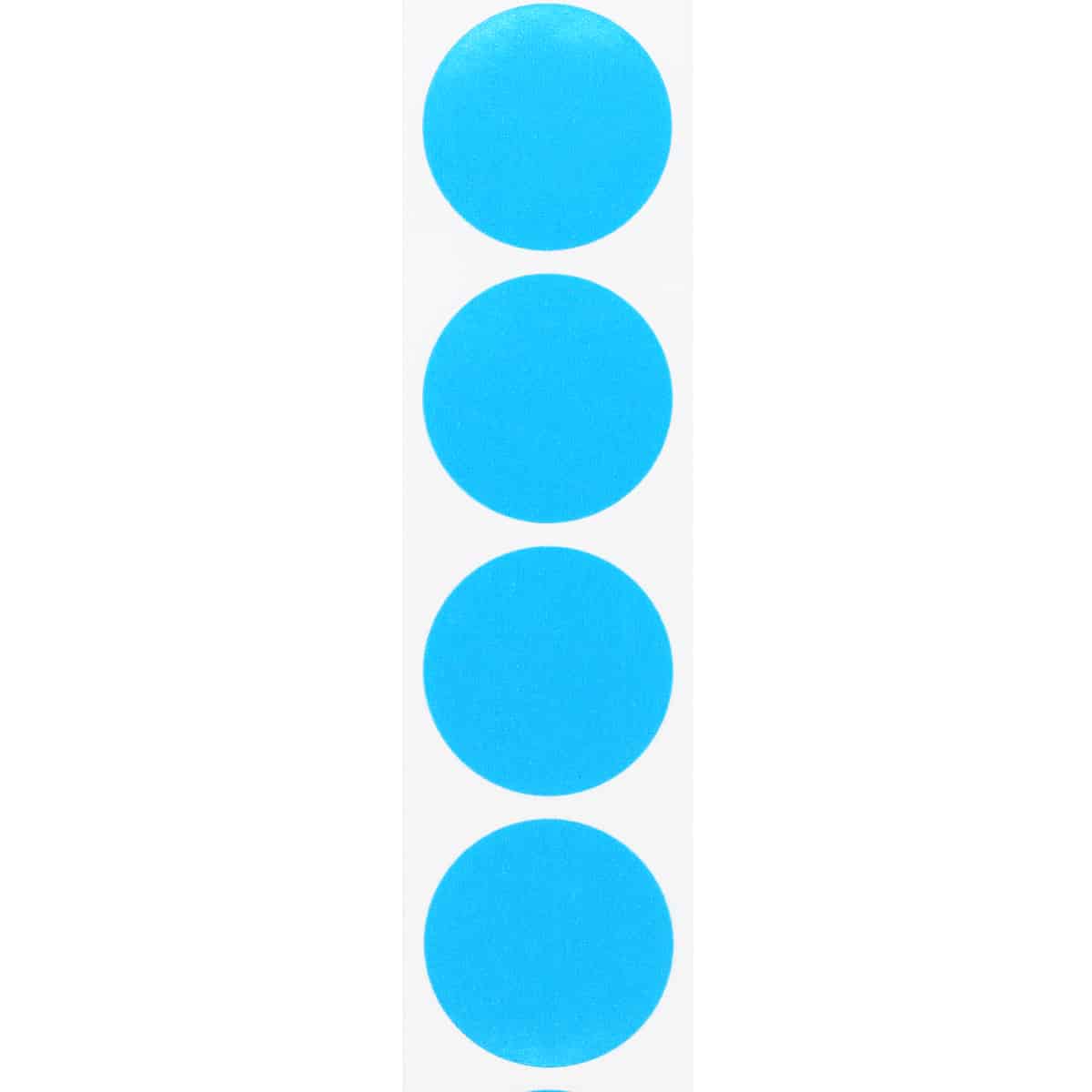Organize and Beautify Your Bullet Journal with Labels
Bullet journaling is a versatile and creative way to stay organized. This analog system combines to-do lists, calendars, and personal reflection into one customizable notebook. While the system itself is simple and effective, the true beauty of bullet journaling lies in its flexibility. One tool that can help you take your bullet journal to the next level is labels. In this blog, we’ll explore how labels can be a game-changer for your bullet journal, enhancing both its aesthetics and functionality.
The Power of Labels
Labels are small, sticky wonders that can add both form and function to your bullet journal. Here’s why you should consider incorporating them:
Organization: Labels help categorize and sort your content. By color-coding and labeling different sections or pages, you can easily find the information you need.
Time-saving: Writing the same headers or categories repeatedly can be time-consuming. Labels eliminate this repetitive task, freeing up more time for journaling and planning.
Visual appeal: Labels can be decorative and enhance the overall aesthetic of your journal. They add a personal touch to your layouts, making your journal more enjoyable to use.
Clarity: Neatly labeled sections ensure that your journal is easy to read and navigate, even when you’re in a rush or on the go.
The Power of Labels
Labels are small, sticky wonders that can add both form and function to your bullet journal. Here’s why you should consider incorporating them:
Organization: Labels help categorize and sort your content. By color-coding and labeling different sections or pages, you can easily find the information you need.
Time-saving: Writing the same headers or categories repeatedly can be time-consuming. Labels eliminate this repetitive task, freeing up more time for journaling and planning.
Visual appeal: Labels can be decorative and enhance the overall aesthetic of your journal. They add a personal touch to your layouts, making your journal more enjoyable to use.
Clarity: Neatly labeled sections ensure that your journal is easy to read and navigate, even when you’re in a rush or on the go.


How to Use Labels in Your Bullet Journal
Now that you understand the benefits of labels, let’s explore some creative ways to use them in your bullet journal:
Color-Coded Key: Create a color-coded key on the first page of your journal. Assign colors to specific categories or topics, and use labels of corresponding colors to tag pages throughout your journal. This makes it easy to identify sections at a glance.
Monthly Calendar: Label the dates of the month with stickers or small labels. This can be especially helpful for highlighting important events, birthdays, or appointments.
Page Tabs: Use labels as tabs for quick access to frequently used pages. For instance, you can create tabs for your monthly spreads, habit trackers, or a future log.
Index Page: Instead of hand-writing your index, use labels to create an easy-to-read and neatly organized index page. Simply stick a label on the page edge and write the corresponding page numbers and topics.
Habit Tracking: Create a dedicated habit tracker page and use labels to mark completed days or specific habits. This allows you to track your progress with ease.
Goal Setting: For goal-setting pages, use labels to add motivational quotes or reminders. They can serve as visual cues for your aspirations.
Decoration: Labels with intricate designs, shapes, or patterns can be used to embellish your bullet journal, giving it a personalized and artistic touch.
Choosing the Right Labels
When selecting labels for your bullet journal, consider the following tips:
Size: Choose labels that are the right size for your journal. They should be big enough to write on, but not too large to overcrowd the page.
Adhesive Quality: Ensure that the labels you choose have strong adhesive to prevent them from falling off over time.
Aesthetic: Consider the design and color of the labels. You can opt for plain and functional labels or those with decorative elements, depending on your personal style.
The History of Bullet Journaling
Bullet journaling is a flexible and highly customizable analog system for personal organization, productivity, and creativity. It was created by Ryder Carroll and has gained widespread popularity for its adaptability to individual needs and preferences. Here’s a breakdown of what bullet journaling is, when someone would use it, and why it can be valuable:
What is Bullet Journaling?
A bullet journal is essentially a blank notebook that serves as a versatile tool for tracking, organizing, and planning various aspects of one’s life. What sets it apart from traditional planners is its open-ended nature, allowing users to create a system tailored to their unique needs. The basic components of a bullet journal include:
Index: An index at the front of the journal for easy reference to specific sections or pages.
Future Log: A year-at-a-glance spread for recording future events, goals, or tasks.
Monthly Log: Monthly overviews where you can log appointments, important dates, and tasks.
Daily Log: A daily journal where you record tasks, events, notes, and more on a day-to-day basis.
Rapid Logging: A key of symbols (bullets) to signify different types of entries, like tasks, events, and notes.
Collections: Customized sections for lists, tracking, and other content, such as habit trackers, reading lists, or project plans.

When to Use a Bullet Journal:
Personal Organization: Bullet journaling is ideal for those who want to stay organized and have a centralized place to manage to-do lists, appointments, and personal goals.
Project Management: It can be used as a project management tool, allowing individuals to break down complex projects into manageable tasks, track progress, and set deadlines.
Goal Setting: Bullet journals are great for setting and tracking personal and professional goals. Users can create vision boards, goal lists, and progress trackers.
Time Management: Those looking to manage their time efficiently can use bullet journals to schedule tasks, allocate time to various activities, and analyze how they spend their days.
Creativity and Self-Expression: Many people use bullet journals as a creative outlet. You can incorporate art, calligraphy, and decorations into your journal, making it a form of self-expression and relaxation.
Reflection and Mindfulness: Bullet journaling can be a tool for self-reflection and mindfulness. Users can jot down thoughts, gratitude lists, and daily reflections to promote mental well-being.

Why Use a Bullet Journal:
Customization: Bullet journals are highly adaptable. You can design and structure your journal in a way that suits your individual preferences and needs. There are no pre-set templates, so you have complete creative freedom.
Increased Productivity: The system encourages efficient task management. The use of symbols allows you to quickly prioritize and track tasks, making it easier to complete them.
Consolidation: Everything is in one place. Instead of having separate planners, notebooks, and to-do lists, a bullet journal can consolidate all your planning and tracking needs.
Improved Organization: The journal’s index and structured layout help keep your content organized and easy to find.
Mindfulness and Reflection: The practice of regularly journaling your thoughts, goals, and gratitude can promote mindfulness and self-improvement.
Creative Outlet: Bullet journaling offers a creative outlet for those who enjoy artistic expression, allowing you to combine functionality and aesthetics.
In conclusion, bullet journaling is a highly adaptable system that can be used by anyone seeking a more organized and intentional way of managing their life. It offers the freedom to tailor the journal to your unique needs and can be a valuable tool for productivity, creativity, and personal growth. Whether you’re a busy professional, a student, an artist, or someone looking to lead a more organized life, a bullet journal can be a powerful companion in achieving your goals.
Labels are a versatile tool that can elevate your bullet journal experience. Whether you use them for practical organization or artistic expression, labels offer a simple yet effective way to make your bullet journal more efficient and visually appealing. Experiment with different labeling techniques and find what works best for you, making your bullet journal an even more personalized and enjoyable planning tool. So, grab some labels, get creative, and watch your bullet journal come to life with color and organization!
Who We Are
InStockLabels.com manufactures pre-printed and custom adhesive labels in Salt Lake City, Utah. We proudly make all of our products in the U.S.A. and keep thousands of our pre-printed labels in stock, ready to ship. We use eco-friendly and water-based inks to print designs on many different materials, from semi-gloss paper to clear polypropylene and everything in between.
Our labels are created on large label presses and hand-rolled on a core to meet the perfect quantity. After, they go through a quality control check and are placed in our barcoded bins. They are then ready to be picked and shipped by our warehouse team.
We do our best to have your order shipped within 24 hours. Often, we even have your order out within hours of you making your purchase.
If you need custom-designed labels, we can do that too. We have a team ready to help you from beginning to end. Fill out a simple form to request a custom quote.
We appreciate your trust in us as your label provider, and strive to give you the best experience.
Respectfully,
The InStockLabels.com Team




Leave a Reply